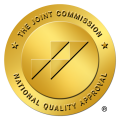LGBTQ+ Affirming
Addiction Treatment
Is Your Center Equipped to Deliver patient-centered, culturally sensitive treatment services to the LGBTQ+ Community?
The Importance of Providing the LGBTQ+ Community with Affirming Care
This article shows why providing an LGBTQ-affirming treatment facility creates a more inclusive treatment environment and expands potential recruitment opportunities. Treatment programs that offer treatment to the LGBTQ+ community are vital to the growth of your treatment program.
The Importance of Reaching Out to the LGBTQ+ Community
It’s estimated that over 16 million Americans identify as LGBTQ+. Each generation of Americans sees a higher percentage of members identifying as LGBTQ+:1
The significant increase from Generation X to Generation Z shows a trend that your treatment program needs to account for. Generation Z is approaching peak age for addiction issues, with its oldest members now in their mid-20s. In California, the numbers are more compelling. Approximately 28% of California’s LGBTQ+ population is Generation Z and 25% are Millenials.2
To remain competitive, your treatment program must create an inclusive environment for the LGBTQ+ community.
LGBTQ+ Members Experience Substance Use Disorders at a Higher Rate
Substance use disorder (SUD) can devastate lives if not treated, and LGBTQ+ people are 2.5 times more likely to develop SUD than non-LGBTQ+ members.3 However, healthcare and appropriate treatment for LGBTQ+ individuals are sparse. SUD treatment centers must bring more comprehensive LGBTQ+ affirming care to their models.
How Do You Start Providing an LGBTQ-Affirming Treatment Facility?
Pair with a partner experienced in treating the LGBTQ+ community and who knows the ins and outs of providing an affirming treatment program. Partnering with experts allows you to provide urgent services quicker and with fewer missteps, thereby improving your reputation and profits.
The Bottom Line
Between 9% to 16% of your treatment demographic identifies as LGBTQ+ and experiences substance use disorders at a higher rate than the general population. Can you afford not to provide an LGBTQ-affirming treatment environment?
Defining LGBTQ+ and Substance Use Disorders
Let’s define the key terms that we discuss in this article. Namely, LGBTQ+ and substance use disorders.
What Does LGBTQ+ Mean?
The LGBTQ+ community is a minority group consisting of non-heterosexual and non-cisgender individuals. Cisgender means that one identifies with the gender assigned at birth. Because the LGBTQ+ community is diverse and complex, there are many definitions for each sexual and gender identity.
Gay is a term for those attracted to the same gender as themselves. Lesbians are women attracted to other women. Bisexuals are attracted to multiple genders. The Q in LGBTQ+ sometimes refers to questioning but more commonly means queer. Queer is a reclaimed umbrella term for members of the LGBTQ+ community.4 Other sexual identities embody the “+” in LGBTQ+. Asexual members do not experience sexual attractions. Pansexual individuals are attracted to someone regardless of gender. Some use bisexual and pansexual interchangeably, while others prefer one over the other. 4
The LGBTQ+ community also embodies varying gender identities. Transgender is a term for those whose gender does not align with the gender assigned to them at birth. 4 Being non-binary means something different for everyone. Non-binary individuals are those who experience gender outside of the male/female binary. Some nonbinary members use they/them pronouns over he or she.
Examples of Famous People in the LGBTQ+ Community
- Lesbian – Ellen DeGeneres, Kate McKinnon
- Gay Men – Pete Buttigieg, Neil Patrick Harris
- Bisexual – Michelle Rodriguez, Drew Barrymore
- Transgender – Laverne Cox, Caitlyn Jenner
- Queer – Ezra Miller, Courtney Act
- (+) Non-Binary – Elliot Page, Rose McGowan
- (+) Gender Fluid – Ruby Rose, Miley Cyrus
Criteria for SUD
- The substance is taken for an extended period or in larger amounts than intended.
- Unsuccessful efforts to cut back on the substance.
- Excessive time dedicated to the substance, whether obtaining or using it.
- Cravings for the substance.
- Failure to meet major social and work obligations due to substance use.
- Substance use occurs despite occupational problems related to it.
- Quitting social, recreational, or occupational activities because of substance use.
- Using the substance in dangerous situations.
- Continued use of the substance despite the knowledge that it causes psychological or physical problems.
- Tolerance of the substance increases.
- Withdrawal symptoms when substance use stops.
For individuals with a substance use disorder, the misuse of drugs or alcohol is not voluntary. Brain imaging scans for those with SUD show physical changes in the areas responsible for behavior, decision-making, learning, memory, and judgment. In the LGBTQ+ community, substance use disorders consistently make life more difficult.6
Beyond SUD - The LGBTQ+ Community and Mental Health
According to the APA, LGBTQ+ individuals are more than twice as likely to develop a mental disorder in their lifetime than straight and cisgender individuals. LGBTQ+ individuals also might experience higher levels of psychosis, bipolar disorder, and other mood disorders.
The rate of such disorders is because of the oppression and hardships LGBTQ+ members experience due to their sexual or gender identification. These difficulties lead to a higher risk of mental illnesses, and these mental illnesses can co-occur with substance use disorders. Both disorders must be considered during treatment. 7
Anxiety, Depression, and Suicidal Thoughts
LBGBTQ+ individuals are more likely to experience anxiety and depression than heterosexual and cisgender individuals. LGBTQ+ members are also more likely to experience severe depressive episodes, and suicidal thoughts are prevalent amongst members of this community.
While 2.2% of cisgender and heterosexual individuals have considered suicide, 4.4% of gay men and lesbians have considered suicide alongside 7.4 % of bisexual individuals. Approximately 30.8% of transgender individuals have also considered ending their own lives. When it comes to suicide attempts, lesbian, bisexual, and gay youth are over 4 times more likely to attempt suicide than cisgender, heterosexual youth. 8
PTSD
LGBTQ+ individuals are at an increased risk for PTSD. This is likely because many members face an increased risk of violence and trauma due to their identification. When treating LGBTQ+ patients, it’s important to understand the potential likelihood of trauma. 9Eating Disorders
People in the LGBTQ+ community are at a higher risk for eating disorders than their heterosexual and cisgender counterparts. Increased discrimination and the stress associated with being LGBTQ+ can lead to binge eating in lesbian and bisexual women. Furthermore, body dissatisfaction is common amongst gay men and can increase the risk of an eating disorder.10The Minority Stress Model and Challenges for the LGBTQ+ Community
A significant factor behind LGBTQ+ mental illness statistics is the minority stress model. The minority stress model indicates that LGBTQ+ individuals face unique challenges that cause additional stress and mental health problems.10 To complicate matters, many LGBTQ+ people have reported stigma when trying to access health services, leading some individuals to forego healthcare and treatment completely.
LGBTQ+ individuals face homophobia and/or transphobia on an internal, social, and sociopolitical scale. They are more likely to be homeless and unemployed. Transgender people face higher rates of poverty than cisgender individuals, and this factor is worsened by a lack of legal and federal protection.
While all members of the LGBTQ community are at an increased risk for violence, transgender individuals are more likely to be victims of hate crimes and assaults.
LGBTQ+ people are also less likely to have social support in comparison to heterosexual individuals. This is particularly true for LGBTQ+ individuals who live in a region with a small LGBTQ+ population. Bisexual members might feel particularly isolated, facing discrimination from society as well as prejudice from within the community. All these factors and more contribute to the significant stress LGBTQ+ people face, which may lead to substance use. 11
How Common is Substance Use in the LGBTQ+ Community?
Like other mental illnesses, SUD is more common in the LGBTQ+ community than in straight and cisgender people. For instance, women who identify as lesbian/bisexual are more than twice as likely to engage in heavy alcohol use as heterosexual women.
Trans people are also more likely to be assaulted and could develop a substance use disorder stemming from the assault. 12
Further studies must be done to determine the true extent of LGBTQ+ substance use and the contributing factors. It’s clear, however, that substance use disorders are more common in the LGBTQ community largely due to minority-related stress. Factors such as discriminatory government policies, violence, self-hate, social isolation, and family disapproval often contribute to the development of SUD. Transgender and gender-nonconforming individuals have unique stressors, as do LGBTQ+ people of color. Many studies have found that substance use in the LGBTQ+ community is due to stress-related coping.
Sociocultural differences and the targeting of LGBTQ+ people by tobacco and alcohol companies also exacerbate the problem. The LGBTQ+ community tends to have more permissive substance use norms. 13
What Substances are Most Abused or Misused in the LGBTQ+ Community?
Alcohol
Alcohol use is very prevalent within the LGBTQ+ community. Historically, LGBTQ+ people had to seek refuge from prejudice in standard bars, meaning gay bars became the norm for LGBTQ+ social settings. Many people within the community agree that the number of gay bars compared to non-alcohol-oriented settings is likely a contributing factor to alcohol abuse. While most LGBTQ+ people appreciate the historical significance of gay bars, many members have expressed social pressure to fit in and drink at them. 14 Alcohol misuse, especially in the form of heavy drinking, leads to a variety of dangers and problems. These problems include blackouts, suicide, and sexual assaults. For trans people, suicidal ideation became more common while drinking. 15Stimulants
LGBTQ+ people are more likely to use stimulants than those not in the community. Stimulants include, but are not limited to, cocaine and methamphetamine. Stimulant use is typically higher for LGBTQ+ individuals than cis and straight individuals, though lesbians tend to use stimulants almost equally to their heterosexual counterparts. For gay and bisexual men, stimulant use is much higher than that of their heterosexual peers. Approximately 9.2% of gay men use stimulants in comparison to 3.2% of heterosexuals. 16Opioids
While there’s not much information available on transgender individuals for opioid use, studies show that lesbian, gay, and bisexual individuals are at a higher risk for opioid abuse. Bisexual women are particularly at risk. Many members of the LGBTQ+ community have reported more access to opioids than their heterosexual peers. 17Addiction Treatment Options
Thankfully, there are various treatment options available for those with substance use disorders. LGBTQ+ people who struggle with substance use disorder can be put in detox therapy, inpatient treatment, outpatient treatment, or medication-assisted treatment. 18
Adding LGBTQ-Affirming Treatment to Your Facility
LGBTQ+ individuals need treatment centers that properly serve them. Create a welcoming environment in your treatment center by including LGBTQ+ media and pamphlets in the waiting room, enforcing non-discrimination policies, and acknowledging LGBTQ+ observances and holidays.
LGBTQ+ Staff
Including LGBTQ+ staff and providers can also make patients feel more comfortable. It is also important to provide ongoing training in culturally affirming treatment for the staff. Facilities should show LGBTQ+ affirmation as well. Gender-neutral restrooms, for instance, are essential for many in the LGBTQ+ community. Adopt LGBTQ+ friendly procedures and ensure all staff can carry out LGBTQ+ affirming interactions with patients.Embracing Cultural Humility
During treatment, providers should embrace “cultural humility”. This is different from “cultural competency”. Cultural humility requires constant ongoing learning about the patient’s identities and experiences within them. Cultural humility recognizes that there will always be more to learn and that everyone within the culture is different.Staying Up to Date
Stay up to date on current potential stressors for the LGBTQ+ community. Discriminatory laws and current events often play a vital role in an LGBTQ+ person’s mental health. It’s essential to stay up to date to understand the laws and potential discrimination LGBTQ+ patients will face. One’s language also matters. Avoid using outdated terms such as “homosexual” and remember that not all LGBTQ+ people have reclaimed the word “queer.” Avoid assumptions about a patients’ gender identity or sexuality. Ask a patient for their preferred pronoun and, if the wrong pronoun is used, apologize but don’t over-apologize. When it comes to training, there’s always more to learn. Sensitivity training programs for staff are a great place to start.Trauma-Informed Care for LBGTQ+ Addiction treatment
Because LGBTQ+ people are marginalized and more likely to have PTSD, it is essential to recognize the impact of potential traumas on their substance abuse disorder recovery. A crucial part of trauma-informed care is creating an environment where the patient feels safe and secure. For LGBTQ+ people, that involves an affirming approach.
When you create a safe space for LGBTQ+ people, they’ll feel able to disclose and work through their traumas. Trauma may be the root of addiction and giving patients a safe space to work through it will make treatment more effective.19
Bostock and Title VII of the Civil Rights Act
Because LGBTQ+ people are marginalized and more likely to have PTSD, it is essential to recognize the impact of potential traumas on their substance abuse disorder recovery. A crucial part of trauma-informed care is creating an environment where the patient feels safe and secure. For LGBTQ+ people, that involves an affirming approach.
When you create a safe space for LGBTQ+ people, they’ll feel able to disclose and work through their traumas. Trauma may be the root of addiction and giving patients a safe space to work through it will make treatment more effective.19
Bostock and Title VII of the Civil Rights Act
On January 20, 2021, President Biden signed an Executive Order applying these protections to all federal laws, regulations, and agencies. Because of the Supreme Court decision and the Executive Order, anyone doing business with the federal government is prohibited from discriminating based on gender identity or sexual orientation.
President Biden ordered all federal agencies to consult with the Attorney General as soon as possible to review all existing orders, regulations, guidance documents, policies, programs, or other agency actions.20 Meaningful change is arising quicker than expected.
Can your treatment facility avoid actions that might be construed as discriminatory to the LGBTQ+ community? You need to consider your interactions with patients and staff. The last thing a treatment facility can afford is an LGBTQ+ discrimination lawsuit that drives away potential patients.
Recapping Why Reaching the LGBTQ+ Community is Vital
Including LGBTQ+ affirming programs will prompt more members of the LGBTQ+ community to your treatment center.
The LGBTQ+ community is an often misunderstood minority group that needs better healthcare and services. Incorporating LGBTQ+ affirmation into your treatment center could do a world of good for your patients and your business. When it comes to LGBTQ+ patients, an affirming program can make all the difference.
Resources
https://news.gallup.com/poll/329708/lgbt-identification-rises-latest-estimate.aspx
https://williamsinstitute.law.ucla.edu/visualization/lgbt-stats/?topic=LGBT&area=6#density
https://www.glaad.org/reference/lgbtq
https://www.thetrevorproject.org/trvr_support_center/glossary/
https://www.drugabuse.gov/publications/media-guide/science-drug-use-addiction-basics
https://www.ncbi.nlm.nih.gov/pmc/articles/PMC4887282/#R59
https://jeatdisord.biomedcentral.com/articles/10.1186/s40337-020-00327-y
https://bmcpublichealth.biomedcentral.com/articles/10.1186/s12889-019-7346-4
http://files.eqcf.org/wp-content/uploads/2017/06/84-Internet-Citation-Note.pdf
https://ps.psychiatryonline.org/doi/full/10.1176/appi.ps.201900029
https://pubmed.ncbi.nlm.nih.gov/25993344/
https://www.ncbi.nlm.nih.gov/pmc/articles/PMC4536098/
https://www.ajpmonline.org/article/S0749-3797(20)30275-0/fulltext
https://www.sciencedirect.com/science/article/abs/pii/S0376871619301747




